10 projects designed to produce renewable energy from fruits and vegetables
by: Ecofriend, 2011-09-09 05:58:52 UTC
Sweta:

Potato BatteryGenerating energy from fruits
It has been heard from last twenty to thirty years that we are losing our strength in the field of energy resources. In coming four to six decades, there will not be any core mineral left for fractional distillation. Hence, replacements are required to be made for hunt of new sources of energy, be it renewable or non-renewable. A lot of conferences have been set up across the world in this regard, which has in turn led to abundance of debates, but all worthless. The fact is that they have wasted energy in a wrong direction for solving the crisis in lieu of finding the right way. It is important to remember that we cannot keep exploiting the non-renewable energy sources for long. We have to find substitutes to the conventional forms of energy which do not pollute our environment and are efficient as well. Here are some projects designed to produce renewable energy from fruits and vegetables.
Ethanol fuel
Ethanol is an efficient fuel made through fermentation, following distillation of sugar or starch crops such as wheat, corn, maize, sugar cane, sorghum etc. It is also obtained by waste of fruits and vegetables. The fuel is high in octane, and hence burns slowly reducing the chances of the engine ‘knock’.
Biogas
Biogas is another example of renewable energy produced by fruits and vegetables. The kitchen waste that includes organic substances undergoes a biological breakdown without oxygen to produce biogas. The gas hence produced in a biogas power plant can be used to regulate engines and motors and serve several other purposes.
Biodiesel
Biodiesel is generally produced by the transesterification of the vegetable oil. The long chains of fatty acids found in vegetable oils are the key functionaries in production of the biodiesel. When the oil reacts with alcohol, biodiesel is produced which can be used in the standard diesel engines.
Methane gas
Methane gas is produced by the anaerobic reaction in rotten vegetables and fruits. It is a suitable fuel to be used in the boilers. Thus, the vegetable waste can be converted into useful energy.
Syngas
A partial combustion of biomass (fruits and vegetables) in the presence of carbon monoxide and hydrogen produces Syngas. This gas can directly be burnt for combustion or can be used in converting into different forms of energy.
Using potato as a battery for clock
The potato clock constitutes of a small LED display and some wires. To prepare this, connect the wires to zinc and copper bars at one end. Connect the other end of these wires to the lead. Now, put the zinc and copper bars into the potato. The clock starts ticking as soon as you complete the circuit. The clock will work till the potatos shrink.
Battery using lemon
Ferrite bead, copper wire, sheets of zinc, copper and lemon are required to make this battery. The lemon is pressed with soft hand so that it becomes juicy inside. Few perpendicular cuts are made on the surface of the lemon. Now, electrodes are fixed in the lemon in an order where copper is placed before zinc and the arrangement is repeated, making sure the rods do not touch each other. Then bent transformer is attached to the copper and the cathode leg is connected to zinc rod respectively. Orange can also be used instead of lemon. You can use this battery to light a bulb.
Battery using fruits
Acidic fruits are tasty and capable of producing electricity which can be harnessed easily. These fruits are eco friendly, cheap and reusable. Things required to construct this kind of battery are - zinc bar, copper bar and fruits. Insert copper and zinc bars into the fruit in such a way that they do not touch each other. Many cells of this kind can be connected together to make an effective battery. Connect positive of one fruit to negative of another fruit. Same type of fruit should not be attached consecutively.
Battery using salt water or vinegar
Two dissimilar metals like copper and iron rod can be used to produce electricity with an electrolyte that is salt water or vinegar. The dry ends of the terminal will give some current. This cell will have to be arranged in series with more number of similar cells to make an effective battery.
Vegetable oil
The vegetable oil extracted from various vegetables is also a renewable source of energy. A low quality of vegetable oil can be used as a fuel.


 10 Modern wonders of green architectural technologies
10 Modern wonders of green architectural technologies
by: Ecofriend, 2011-09-09 08:58:19 UTC
Pallavi Gupta:

Chicago Spire threadChicago Spire thread for green future
The present scenario does not have large scale production catering to large scale requirement of power supply in green technologies. Few breakthrough innovations in large scaled power production concepts and in segregating residential, commercial complexes with green technologies are mentioned below.
1. Lilypad: A green safe haven of the future

Lilypad projectLilypad project for green future
As the global warming is increasing at a fast rate there is an increased risk of the submerging of coastal areas around the world due to rise in water level from the melting of ice at the polar region. Lilypad comes as a saviour for coastal areas. It is a self sufficient eco city which can accommodate around 50,000 people. It can spectacularly generate its power needs from solar, wind, tidal, and biomass energy while floating on water amidst the ocean. It has a water collector and filter at the centre which metes out its water needs. Its top is covered with trees and green grass which helps in recycling carbon dioxide.
2. Bahrain houses World’s First Integrated Wind Turbines

Bahrain housesBahrain houses for green future
The Bahrain World Trade Center is the first tower in the world to be integrated with wind turbines to mete out its power consumption. The trade center is rightly built elliptically to harness wind energy through its 3 huge turbines each of which has 29 meter diameter. Its location is apt as well for there is no dearth of onshore winds blowing directly from the Gulf coast. The wind turbines are expected to generate 11 to 15% of the total power consumption of the towers.
3. Magnetically levitated, Maglev Wind Turbine

Maglev Wind TurbineMaglev Wind Turbine for green future
It is a breakthrough concept in the history of wind power technologies. It is a magnetic wind turbine that can generate one gigawatt of power which in turn meets power consumption of 750 000 homes. It is much more efficient than ordinary wind turbine. It can work at as low as Even a low wind speed of 1.5 meter per second is enough to rotate it. Its building cost is approximately 50-75% less in comparison to ordinary wind turbines and also it takes less time to build it.
4. Chicago Architectural Club sticks to Chicago Spire thread with a new conception

Chicago Spire threadChicago Spire thread for green future
It is a solar plant beautifully built in a swanky spiral. It can supply more than one megawatt of power. It has performance, conference, and exhibition areas as well. One can also have a breathtaking view of the lake and the city from the glass windows of its spiral walkway. It has apparently more than 5000 solar panels. It provides cheap and uninterrupted power supply for commercial use.
5. Farming in future could be ‘Urban Farm, Urban Epicenter’ style

Urban FarmUrban Farm for green future
The urban farm is a farming concept which uses hydroponic method to grow crops. It also has an inbuilt water recycling system. It has the retailing facilities also. Through urban farm, people can enjoy freshly produced food. In many cases food is supplied at long distances which affects the quality of food and urban farm solves this problem.
6. Dongtan EcoCity 2010, China: A step towards a cleaner future

dongtan ecocityDongtan eco city for green future
Dongtan is an eco city on Chongming Island near Shanghai in China, which is using green technologies in all its aspects. The Shanghai Industrial Investment Corporation (SIIC) has taken the expertise of the firm Arup to design the city. Nearly 100 people have been appointed to work on it. Dongtan intends to be a carbon neutral and zero waste city. It is going to help the crowded and polluted Shanghai.
7. Las Vegas redefines city life with a City Centre

Las Vegas City CentreLas Vegas City Centre for green future
MGM Mirage, a reputed developer in the world has opened a City Center, a green project in Las Vegas. It is a collaboration between MGM Mirage and Dubai World. The green architects like Pelli Clarke Pelli, Foster Partners, and Rafael Vinoly have also been rolled in along with many other consultants. 10,000 construction workers and craftsmen have been taught the green building techniques which will be inculcated into the site. The project has sustainability, facility to recycling construction waste, ecofriendly products, and natural lighting. The material from other non working hotels was also recycled for reuse at the city centre.
8. A twist in Dubai’s architectural tale: Spectacular rotating tower to add to its green list

Spectacular rotating towerSpectacular rotating tower for green future
The building is a brainchild of David Fisher. This building has wind turbines which produce more energy than required by the building. It can cover power supply needs of its residents and also provide extra power supply for the use of neighbouring residents. It is a wonderful piece of building, which is a huge energy reservoir. The turbines can produce upto 12,000,000 kilowatt hours of energy in a year.
9. Entangled Bank: A sustainable city development for Dallas

sustainable citysustainable city for green future
Entangled bank in Dallas has been built such that it can treat grey water and redistribute it among residents. It has the facility to capture water runoff as well. It has been installed with solar panels and wind turbines to supply the power.
10. California Academy of Sciences museum

Sciences museumSciences museum for green future
It is a museum with green features. It is designed by Italian architect Renzo Piano. It has a rain forest inhabited with birds, a coral reef with around 4000 fishes and a roof with greenery on it. The greenery on roof helps to conserve energy as it insulates and ventilates the museum below.


 Without chopping the branches a scintillating treehouse is built
Without chopping the branches a scintillating treehouse is built
by: Ecofriend, 2011-09-09 10:01:40 UTC
Megha Gurung:

TreehouseCreated without cutting even a single branch
Human beings have been exploiting the Mother Nature and it is very well said that modern technology owes ecology an apology. Finicky about the nature, Urbanarbolismo a Spanish architecture firm made a pledge to make a tree house without hampering the tree.
Picture Gallery
Treehouse Created Without Cutting Even a Single Branch
The team successfully made a terrific tree house on the centuries old oak tree without chopping it off. The pastures of Extremadura, in western Spain hold up this gorgeous tree proudly. This herculean task was performed smartly by them on the oak’s strongest branches and the structure of the house looks like the part of the tree. The motto of the team was not to cut down any part of the tree but to create a 3D model which could fit within the branches.
A smart cabin was built beside a scintillating porch on the tree and eventually created a brawny tree house and named it the “Rooted Tree House” because the beams supporting it looked like the roots of the tree. The thick leaves of the tree makes the cabin on the tree indistinguishable and the windows makes the room to look lively and amazing. The team has tried to make a place where being eco friendly; there is relaxation, excitement and adventure for the people.
Via: Treehugger


 10 Green vehicles that run on food waste
10 Green vehicles that run on food waste
by: Ecofriend, 2011-09-09 11:25:50 UTC
Marcus Clay:

Vehicle that runs on biofuelThe Volkswagen Beetle Bio-Bug runs on human waste
With the fear of natural fuel supply dwindling, the world is moving toward adopting greener options of energy. Research is going on to develop vehicles which run on biofuel. But, have you ever thought that vehicles could run on food waste?
Here are few vehicles that run on food waste.
1. Volkswagen Beetle Bio-Bug
The decomposition of human waste produces methane, which is used to power the Volkswagen Beetle Bio-Bug. The car starts out on unleaded gasoline and automatically switches to methane when the engine gets warm enough. For the car to run for 10 000 miles, the equivalent of one motoring year, all it requires is the excreta from seventy homes. The VW Beetle can run at a top speed of 114 mph on methane, which is not less than its performance on gasoline, making it a green vehicle.
2. BioFuel Green Vehicle
Here’s another vehicle that gets the “green” label as it runs on biomethane from human waste. It took a year to build this truck that will be fuelled by biomethane produced at Swedish International biogas plant. Initial test-drives by a team from Kettering University gave encouraging performance data.
3. Recycled Racer Runs on Veggie Oil and Chocolate
If regular cars can go green, why not race cars too. A team from Britain created this Formula 3 race car that will run on vegetable oil and waste chocolate. What’s more, the body of the car will be made from recycled carbon fibre, old plastic bottles, and organic materials. The car’s turbocharged engine will use biodiesel and biodegradable lubricants.
4. Chocolate-Powered F3 Racer
You may be gobsmacked to know that this race car is not only powered by green fuel, but some of its parts are made of edible material. The steering wheel is partly made of carrot pulp and its engine runs on chocolate biodiesel. Tests have shown that the car can reach 60 miles per hour in 2.5 seconds and drive wheel-to-wheel with other conventional F3 cars.
5. Chocolate Powered Biotruck
Here’s another truck powered by biodiesel from chocolate waste. The aim of building this truck was to promote the use of recycled waste instead of diverting precious food crops to manufacture the biofuel.
6. Grease cars
Every household and restaurant discards loads of waste vegetable oil every month. Grease cars utilize this waste and are proud of giving the same mileage as regular diesel cars. Emission tests have shown that grease cars emit less toxins when compared to their conventional counterparts making it a green vehicle.
8. Veggie-Fuelled Van
Two Canadian environmentalists created a new Guinness World Record for the ‘longest journey by a car using alternative fuel’ travelling at 45 000 km across the US in a vehicle that runs on waste vegetable oil. The vehicle was a Mitsubishi Delica, powered by a 2.5 litre turbodiesel engine.
9. Coffee-Powered Car
Called the ‘car-puccino’, Jem Stansfield designed the car that is powered by used coffee grounds. The car uses coffee equivalent to about 11 000 espressos to complete the 150 mile trip between London and Manchester. The boot of the car houses a furnace where flammable vapors are generated from the roasted grounds. These vapors fuel the engine.The car was reported to have reached a speed of 70 mph.
10. Eco Buses
These heavy-duty, low-emission buses are powered by ethanol generated from waste timber. Unlike countries like the US and Brazil who generate ethanol from corn, sugarcane, and other food crops, Sweden is proud of this technology that uses waste timber, ensuring that food supply is not affected. What’s most interesting is that these buses emit 90% less carbon dioxide than conventional diesel-fuelled buses.


 Minimalist Bamboo Workstation Is Like An Extruded Squiggle
Minimalist Bamboo Workstation Is Like An Extruded Squiggle
by: TreeHugger Design, 2011-09-08 17:26:03 UTC
 Images credit Miso Soup Design
Miso Soup Design
Images credit Miso Soup Design
Miso Soup Design has designed the K Workstation out of laminated bamboo plywood, "creating efficient space managing working space." I like the way that it seems to be extruded from a single line into three dimensions....
Read the full story on TreeHugger
Jacket Collects And Cleans Rainwater, Stores It In Your Pockets
by: TreeHugger Design, 2011-09-09 15:55:00 UTC
 Images via video screengrab
Images via video screengrab
We all remember that at least once as a kid, we lifted our heads up to the rainclouds, opened our mouths, and tried to drink the rain as it fell. What if instead of this age-old method, you sucked rain out of your pockets? A design for a raincoat that captures and purifies rainwater could make it that easy for you to get a drink while walking in a downpour....
Read the full story on TreeHugger
Jennifer Collier Recycles Old Literature Into Incredible Paper Objects
by: Inhabitat , 2011-09-07 18:41:12 UTC







Read the rest of
Jennifer Collier Recycles Old Literature Into Incredible Paper Objects
Permalink |
Add to
del.icio.us |
digg
Post tags: eco design, jennifer collier, paper objects, recycled books, recycled material, recycled paper, reused materials, unit twelve
Flatspotting - Wooden Bicycle Frames: "Furniture On Wheels," or Something More?
by: Core77, 2011-09-07 21:00:00 UTC

A pair of wooden bicycle frames recently turned up in the ol' inbox, I can't help but take the opportunity to compare and contrast the two designs.
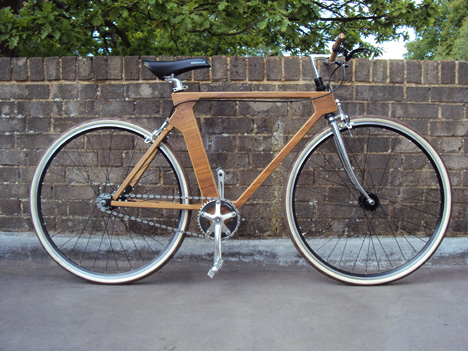
The "Wooden Bicycle" is the first product from
Flat Frame Systems, who eventually hopes to produce furniture as the company grows. Their first offering was actually inspired by a television program that Chief Designer Michael Cubbage saw as a child, featuring a futuristic motorbike that had a flat frame as opposed to tubes. (Since then, he's honed his design skills as a technical illustrator and car stylist for GM South Africa.)

The product description notes that "a wooden bike is the most comfortable bike to ride, as it is slightly flexible," and that it is at least nominally more sustainable that metal bicycles: lest we forget how plants work, the designer reminds us that "while the tree was growing it was absorbing carbon dioxide."

While the frame itself is based on a traditional diamond frame, notable features include a thicker head tube and seat tube, not to mention the flattened seat- and chainstay clusters. As with Jose Rivera's "Ice Cream" flat-pack bicycle concept, it is unclear to whether this there is a functional reason for the skeumorphic form; if not, it might as well look like this.
(more...)


 Trash To Cash: Mining Landfills For Energy And Profit
Trash To Cash: Mining Landfills For Energy And Profit
by: fast company, 2011-09-07 14:36:59 UTC
A Belgian company is working on removing the raw materials from dumps, making both energy and building materials out of them, and then redeveloping the land.
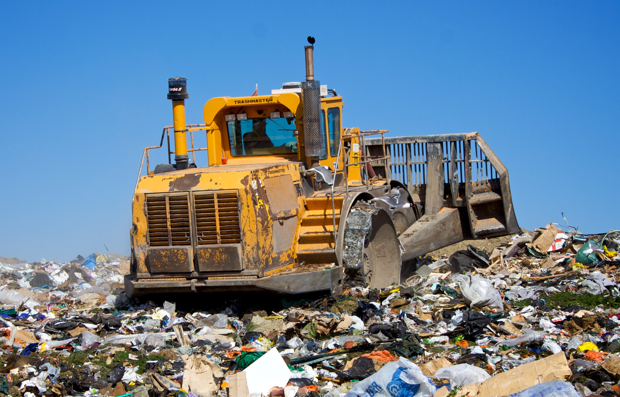
About 50 miles east of Brussels, next to an old coal mine, lies a festering stinkhole that few people ever visit, and most people would rather forget about. Dating from the 1960s, the Remo Milieubeheer landfill at Houthalen-Hechteren is a typical dump full of industrial waste and household garbage--16.5 million tons of it in all.
Hardly the sort of the place to get anyone excited.
Except, that is, Patrick Laevers, director of Group Machiels, the Belgian waste management company that owns the site. Laevers has a 20-year plan to excavate the entire expanse, recycling about 45% of its contents, and converting the rest into electricity.
Eventually, after a complex, multi-phase process he calls “Closing the Circle”, he hopes to turn the site back to nature. What's more, Laevers thinks Houthalen-Hechteren could be the first of many such projects around the world. “We really believe this concept is the future, and that we can all benefit from it,” he says.
Group Machiels first began research the idea of landfill mining back in 2006, in co-operation with three academic partners. Since then, it has collected 2,000-3,000 tons of material for testing, assessing each area of site for recycling and energy-generation value. Laevers says Machiels had fairly detailed records of what had been dumped where over the years. But it needed to find out how much different materials had decomposed over that time.
Machiels has formed a joint venture with Advanced Plasma Power, a UK energy-to-waste company that converts the non-recyclable residue into a mixture of clean-burning natural gas--which generates electricity for 100,000 homes--and a building material called Plasmarok.
Machiels hopes the scheme, which has cost hundreds of millions of dollars, will be fully operational in 2014.
Unusually, Laevers has published some of the project data and know-how in papers and at conferences, hoping others will follow in his lead. He says he has been contacted by people from Chile, Belgium, Bulgaria, Hungary, and Romania, all wanting to find out how they might adapt the project for their own landfllls.
“Everywhere in the world, people are starting to realize the potential from mining landfill,” he says.
Rolf Stein, CEO of Advanced Plasma Power, says “the mind boggles at the potential” for landfill mining--and not just for energy and recycling. Several companies with landfill sites near cities are looking to reclaim land for property development, he says.
There are few reliable statistics on the worldwide volume of landfill, though it’s easy to get a sense of the magnitude: The OECD says 3 billion tons of trash a year will be hitting landfills worldwide by 2030, up from 1.6 billion in 2005.
The concept of mining landfills has been around for years. In the 1950s, the Israelis took soil enriched with waste and spread it over orchards to improve earth quality of the. And, in the 1980s, some U.S. states farmed landfill material for use in incinerators.
But it has taken rising energy prices and higher demand for recyclables (notably plastic and metals), to make landfill mining viable for companies like Machiels. That, and government support: a key part of the funding for the Houthalen-Hechteren project is coming from renewable energy credits.
Laevers says Europe has to get down in its dumps if it is to meet demand for key materials. “In Europe, we don’t have any mining left, except for the materials that have been imported and that now are in landfills. We don’t have a choice but to get them back.”
[Image: Flickr user D'arcy Norman]


 rethinking bamboo at the first beijing international design triennial
rethinking bamboo at the first beijing international design triennial
by: Designboom - Weblog, 2011-09-06 09:00:00 UTC
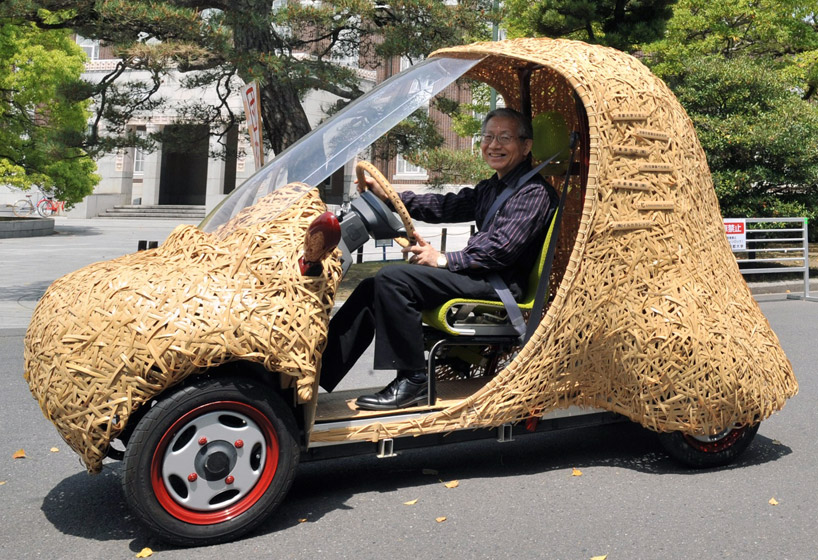
one of five themed exhibitions of the first annual beijing design triennial during beijing design week, 'rethinking bamboo' presents unconventional uses of the natural material in products ranging from clothing to bicycles to motor vehicles to handbags to edifices.
read more
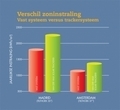



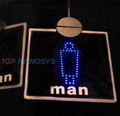


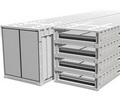
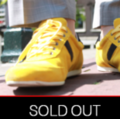

Comments by our Users
Be the first to write a comment for this item.